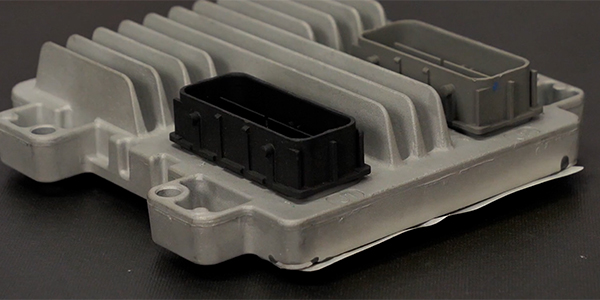CC:
Today’s cars keep getting smarter, thanks to the engine control module’s (ECM) ability to control multiple vehicle functions.
The on-board computer is constantly updated with data (voltage signals) from the sensors (input) about engine operation. Sensors are variable resistors which modify a voltage to or from the computer. Data is analyzed by the ECM and decision commands (usually ground signals) are sent to control devices (output) based upon inputs from the sensors and ECM preprogrammed memory.
There are three types of memory used in ECMs: Read-only memory (ROM) is a preprogrammed section of memory that can only be read by the computer. If the battery power is lost, ROM memory is not lost, and is retained. Random access memory (RAM) contains information that is moved into and out of the RAM and is constantly updated. Sensor information, diagnostic codes and calculation results are stored in the RAM. A loss of battery voltage will result in lost data. Programmable read-only memory (PROM) is a factory programmed set of instructions containing the calibration data for a particular vehicles’ engine, transmission, body and axle ratio. This memory may or may not be removable depending upon the vehicle manufacturer. If this memory chip (PROM) is removable, it must be transferred to the replacement unit. If the memory is non-removable, the whole ECM must be replaced.
The failure of emission system components or connections will result in the illumination of the check engine light on the dash and a “trouble code” being stored in the memory. Retrieval of the code(s) will identify the problem circuit, allowing your technicians to concentrate on the specific circuit affected and perform repairs accordingly. Function tests are then performed to confirm that the repair is good and the system is functioning properly.
In many cases, no-start problems can be caused by communication issues between the control module, ignition switch and key or key fob; by a fault in the ECM’s anti-theft circuitry; or by a problem in the starter, ignition or fuel-delivery system. That’s why accurate diagnosis of any suspected ECM-related fault is so important.
It’s important that you explain to your customers of the complete systems that manage the operation of their vehicle, and avoid the tendency of thinking in terms of individual components. Remember, each part number works in conjunction with many other parts and components to make up a complete system, and many systems make up each individual vehicle.
Simply put, these sophisticated modules rarely fail by themselves – typically, the cause is overloaded circuits caused by shorted solenoids and/or relays that do not meet specified Ohm’s resistance. All ECM controlled components MUST be checked for proper resistance before the replacement unit is installed or premature failure will result. Bad ground circuits and improper voltages can also lead to erratic operation or damage to the ECM. Voltage supplies should be checked and verified. For more information about ECMs and systems, visit Cardone.com.
This video is sponsored by The Group Training Academy.














